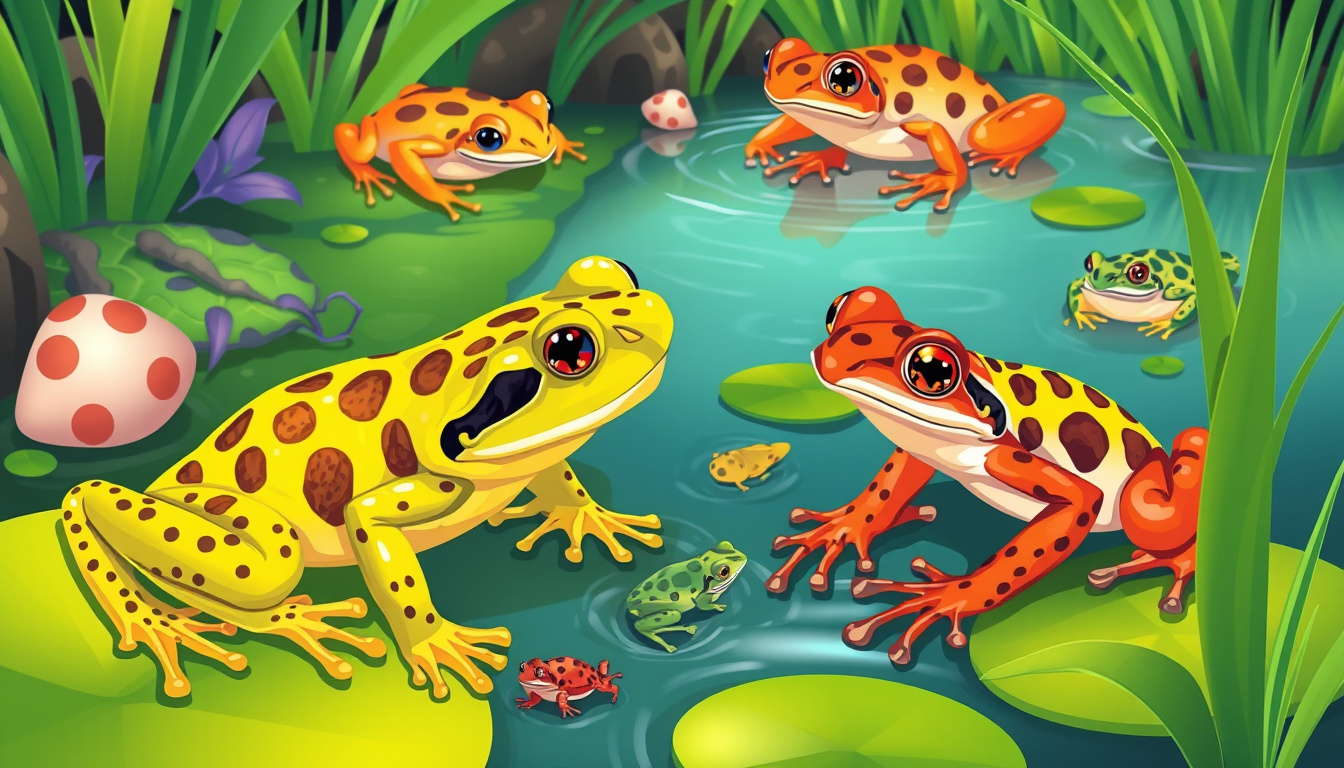Have you ever marveled at the vibrant colors of a poison dart frog or watched a tadpole gracefully swim in a pond?
If so, you’re already tuned into the mesmerizing world of amphibian biology!
Amphibians, including frogs, toads, salamanders, and newts, are unique creatures that bridge the gap between water and land.
They exhibit fascinating adaptations and life cycles that make them some of the most intriguing animals on the planet.
In this article, we’ll dive deep into the extraordinary biology of amphibians, uncovering how they thrive in various environments, their vital roles in our ecosystems, and the pressing conservation challenges they face.
Get ready to jump into an exciting adventure where science meets nature!


Adaptations for Survival in Diverse Environments
Amphibian biology showcases some of the most fascinating adaptations for survival in diverse environments, making these creatures a subject of intense study and intrigue.
From the polluted ponds to the lush rainforests, amphibians like frogs, toads, and salamanders have developed unique traits that enable them to thrive in varying habitats.
For instance, their permeable skin not only allows for gas exchange but also plays a critical role in absorbing moisture, making them well-suited for both terrestrial and aquatic environments.
Moreover, many amphibians possess remarkable camouflage abilities, blending seamlessly into their surroundings to avoid predators.
Their life cycles are equally adaptable, as many species undergo metamorphosis from aquatic larvae to land-dwelling adults, allowing them to exploit different ecological niches.
Understanding amphibian biology is essential for appreciating the crucial roles these animals play in ecosystem health and the challenges they face in an ever-changing world.
The Role of Amphibians in Ecosystems
Amphibians play a crucial role in ecosystems as both predators and prey, forming an integral part of the food web.
Understanding amphibian biology is essential for appreciating how these remarkable creatures contribute to ecological balance.
They often inhabit wetlands and forests, where they help control insect populations, benefiting agriculture and human health by managing pests.
Additionally, amphibians serve as indicators of environmental health; their sensitive skin and reliance on both aquatic and terrestrial habitats make them vulnerable to pollution and climate change.
When amphibian populations decline, it signals broader problems in the ecosystem, prompting scientists to investigate further.
Thus, studying amphibian biology not only enlightens us about these fascinating animals but also enhances our understanding of the intricate relationships within our ecosystems.
Frequently Asked Questions
What are the main characteristics of amphibians?
Amphibians are cold-blooded vertebrates that typically have a life cycle involving both aquatic and terrestrial stages.
They possess moist skin, which aids in respiration and water absorption, and most species undergo metamorphosis from a larval stage to an adult form.
How do amphibians adapt to their environments?
Amphibians have developed various adaptations such as permeable skin for gas exchange, specialized limbs for jumping or swimming, and behaviors like burrowing or estivation during dry periods, allowing them to thrive in diverse habitats.
What is the significance of amphibians in ecosystems?
Amphibians play a crucial role in ecosystems as both predators and prey.
They help control insect populations and serve as indicators of environmental health due to their sensitivity to pollutants and habitat changes.
What conservation challenges do amphibians face?
Amphibians are threatened by habitat loss, climate change, pollution, disease (such as chytridiomycosis), and invasive species.
These challenges have led to significant declines in amphibian populations worldwide.
What can be done to protect amphibian species?
Conservation efforts include habitat preservation, establishing protected areas, conducting research to understand threats, breeding programs for endangered species, and raising public awareness about the importance of amphibians and their conservation.
[center][/center]
[center][color=rgb(10, 10, 10)][highlight=rgb(255, 248, 231)] [/highlight][/color][color=rgb(10, 10, 10)][highlight=rgb(255, 248, 231)]As an Amazon Affiliate,[/highlight][/color][color=rgb(10, 10, 10)][highlight=rgb(255, 248, 231)] [/highlight][/color][color=rgb(10, 10, 10)][highlight=rgb(255, 248, 231)]Savvy Keto makes a commission[/highlight][/color][color=rgb(10, 10, 10)][highlight=rgb(255, 248, 231)] [/highlight][/color][color=rgb(10, 10, 10)][highlight=rgb(255, 248, 231)](at no extra cost to you)[/highlight][/color][color=rgb(10, 10, 10)][highlight=rgb(255, 248, 231)] [/highlight][/color][color=rgb(10, 10, 10)][highlight=rgb(255, 248, 231)]on purchases you make[/highlight][/color][color=rgb(10, 10, 10)][highlight=rgb(255, 248, 231)] [/highlight][/color][color=rgb(10, 10, 10)][highlight=rgb(255, 248, 231)]thru links on this site.[/highlight][/color][/center]

